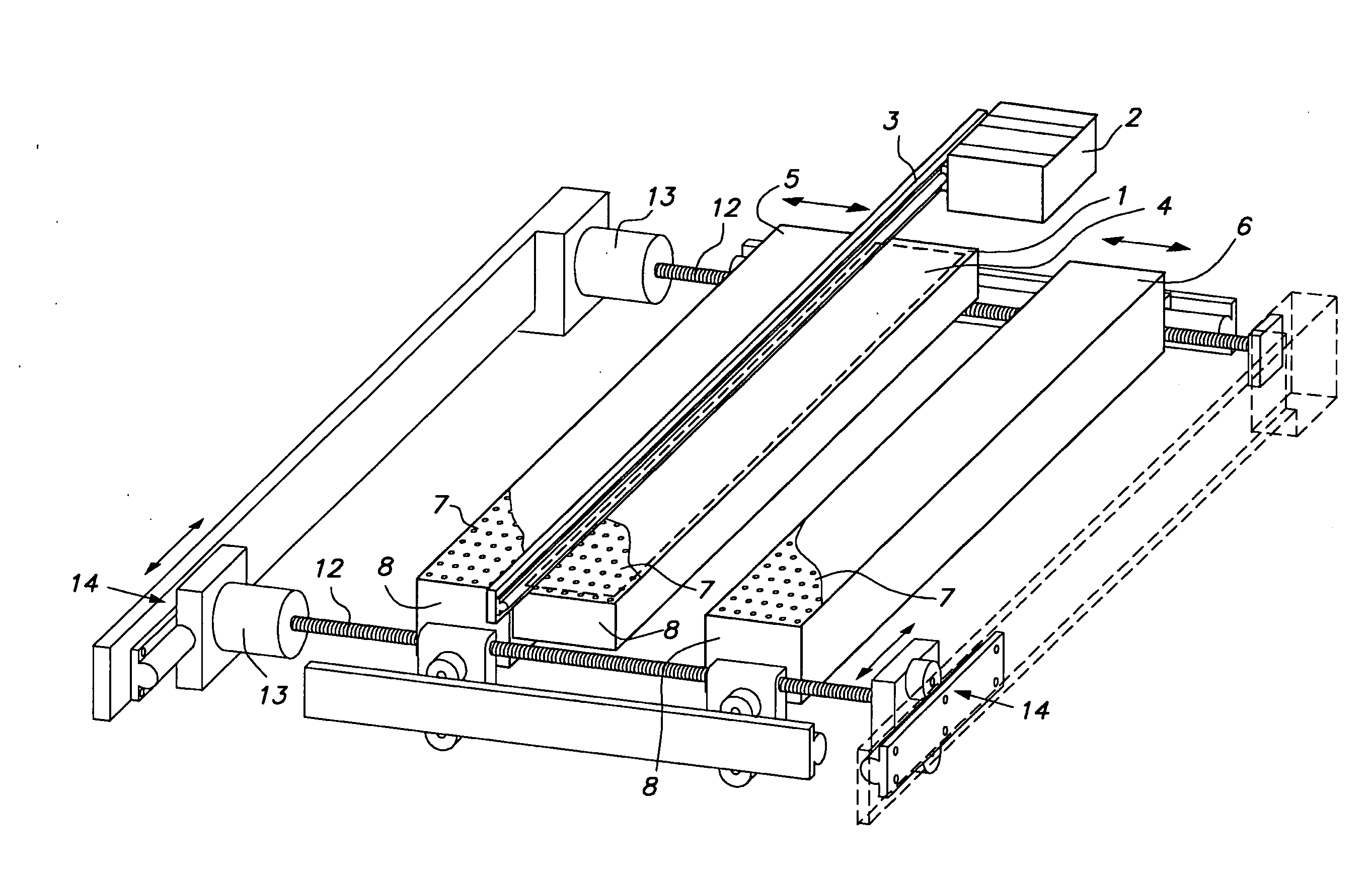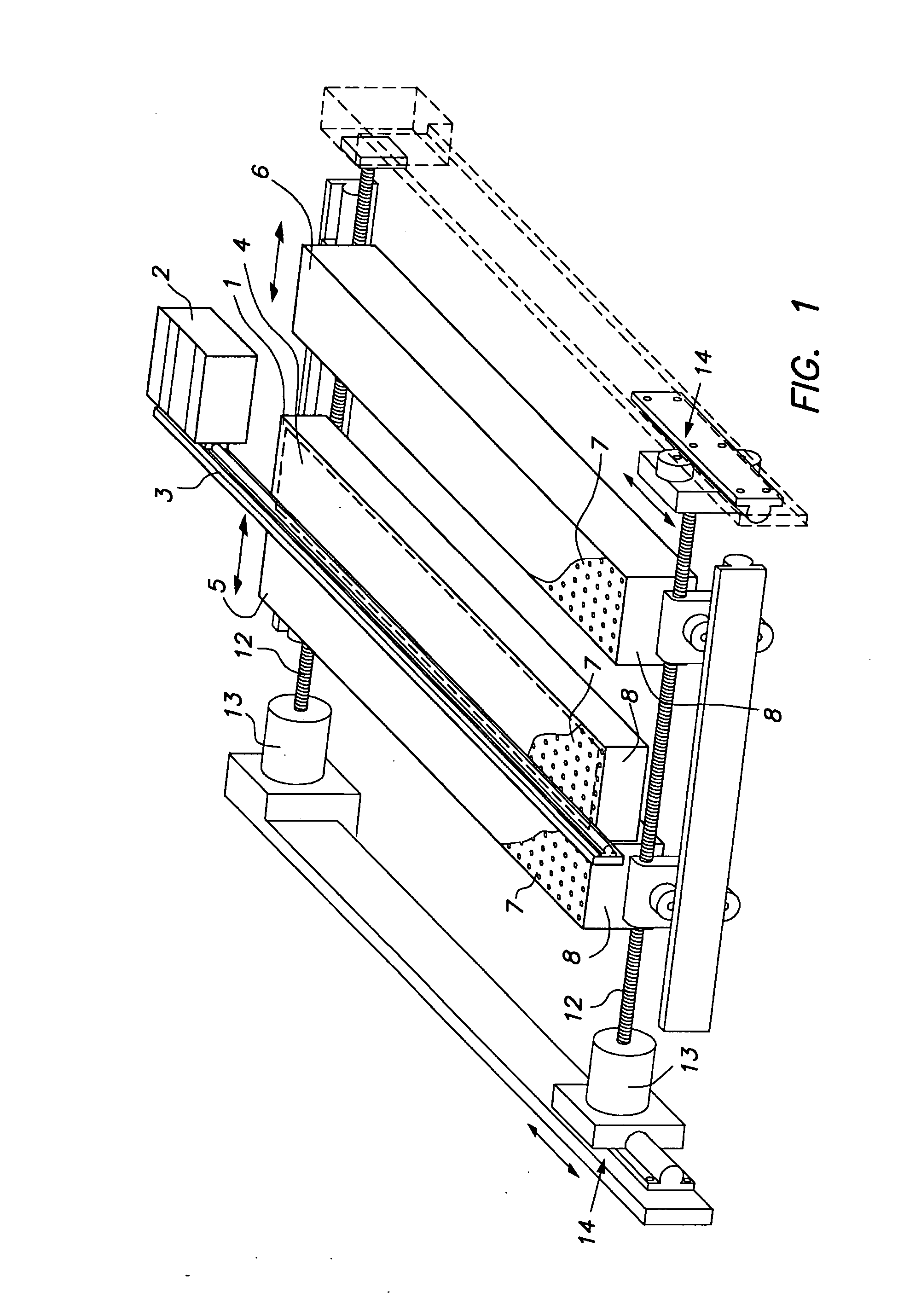Moving floor media transport for digital printers
a technology of moving floor and media transport, which is applied in the direction of printing, thin material processing, other printing apparatus, etc., can solve the problems of printing showing defects, forming artefacts, and affecting the quality of the drive used, so as to achieve the effect of avoiding the formation of artefacts
- Summary
- Abstract
- Description
- Claims
- Application Information
AI Technical Summary
Benefits of technology
Problems solved by technology
Method used
Image
Examples
Embodiment Construction
[0037]The solution to the problem is provided by a media transport system as schematically shown in FIG. 1 having at least 2 tables forming a moving floor, preferably vacuum tables, for adhering the media to them wherein during printing the working area is fully supported by a static table.
[0038]While the present invention will hereinafter be described in connection with preferred embodiments thereof, it will be understood that it is not intended to limit the invention to those embodiments.
GENERAL DESCRIPTION
[0039]Media transport systems as depicted in FIG. 1 normally also comprises
[0040]The printing unit with the step-wise media transport system.
[0041]A feeding roll to deliver non-printed receiving medium to the printing unit.
[0042]A take-up roll for storing the printed medium. Alternatively it is possible to deliver the material to a finishing unit to cut the material at appropriate length eventually followed by further finishing such as folding, stapling, etc . . .
[0043]Other emb...
PUM
| Property | Measurement | Unit |
|---|---|---|
| holding force | aaaaa | aaaaa |
| area | aaaaa | aaaaa |
| time | aaaaa | aaaaa |
Abstract
Description
Claims
Application Information
 Login to View More
Login to View More - R&D
- Intellectual Property
- Life Sciences
- Materials
- Tech Scout
- Unparalleled Data Quality
- Higher Quality Content
- 60% Fewer Hallucinations
Browse by: Latest US Patents, China's latest patents, Technical Efficacy Thesaurus, Application Domain, Technology Topic, Popular Technical Reports.
© 2025 PatSnap. All rights reserved.Legal|Privacy policy|Modern Slavery Act Transparency Statement|Sitemap|About US| Contact US: help@patsnap.com



